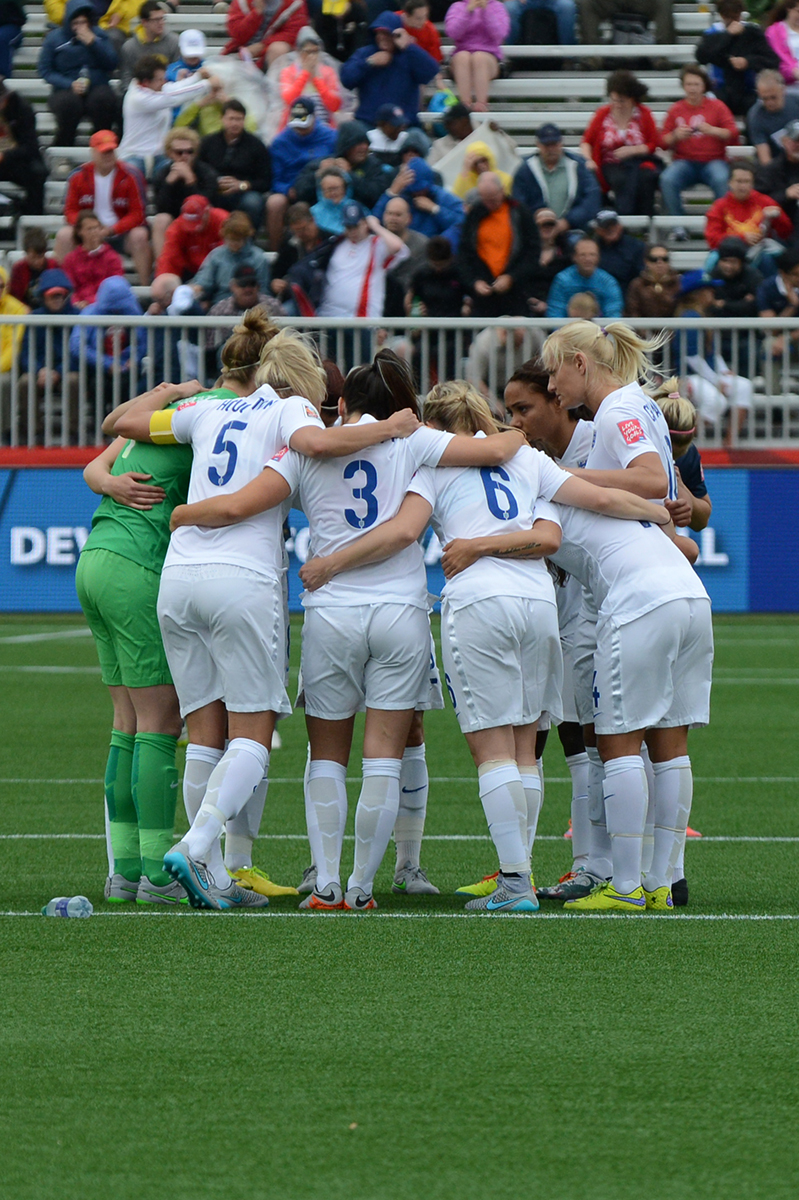Ahead of the 2015 World Cup, Mark Sampson, England head coach at the time, laid out the path he believed his squad would have to face to win the tournament in a player’s meeting.
The path predicted had the Lionesses facing Norway in the second round, hosts Canada in the quarterfinals, defending champions Japan in the semifinals, and a final against the United States.
It was a prediction that came scarily close to becoming reality, with England facing Even Pellerud’s Norway in the second round after both sides finished runners-up in their respective groups.
While there are only a mere few days for teams to prepare for who they would face in the knockout stage, England was well ahead of the game and had analysts and scouts out watching every potential opponent for almost 12 months leading up to the tournament, with Norway top of the list, such was Sampson’s belief they would be their opposition.
Sampson had shown no fear of chopping and changing not only his starting XI throughout the tournament, but his system too. The Welshman’s belief was that England was largely an unknown quantity and not one of the favouites as they are today, and that their adaptability would be vital in progressing deep into the tournament.
In a move that was criticized in the media, Sampson and his staff came up with a plan to thwart the rapid Elodie Thomis in the opening game against France by playing full back Lucy Bronze at left wing to essentially double up on the Lyon winger with left back Claire Rafferty.
Sampson changed things up again for a game that would set England on the way to a bronze medal, which would change the face of women’s football in the nation, and set it on an upward path it may never have taken had the Lionesses not come back from Solveig Gulbrandsen’s header early in the second half.
Bronze, who hadn’t played the last group game in order to be saved for Norway, was back at right back and would have the decisive blow, but it was a well-trained set piece that got England back in it.
One member of staff working within camp at the time described Steph Houghton’s movement to lose her defender in the buildup as “four or five of the most important steps in English women’s football history” as the captain got on the end of a corner to head home the equalizer.
Privately, staff members admit the Lionesses were overcome with nerves in the first half, playing much deeper than planned in the buildup, such was the desperation to inspire those at home and change the perception of women’s football, and the England team was a mere two years removed from a group-stage exit at Euro 2013 that saw the end of Hope Powell’s lengthy tenure.
The Bronze goal, though, was something they hadn’t worked on, it was simply a moment of inspiration, of instinct, from a player whose career would be launched into space off the back of her wonder strike.
England players were kept away from the ever-growing excitement back home, with Sampson’s plan and analysis still very much on course, with hosts Canada up next, once again as the head coach had predicted pre-tournament.
They once again set about executing a plan mapped out well in advance, and both goals came as a product of their analysis. Goalkeeper coach Lee Kendall, in charge of set pieces, knew Canada would focus on the aerial abilities of Jill Scott and Houghton from balls into the box, but England also knew Bronze was a threat in the air and told her to target Canada’s smallest player, Allysha Chapman, knowing Canada would leave their strongest players in the air to deal with Houghton and Scott.
They also knew Canada’s center back Lauren Sesselmann was a former forward and not always completely comfortable at the back, so decided to start with Jodie Taylor with the intention of pressing and frustrating the Canada defense. When Sesselmann slipped on the ball, Taylor nipped in to score the opener.
Minutes later, a free kick into the box purposefully aimed toward Bronze at the back post brought the second and put England into a lead that Canada would never overturn, despite Christine Sinclair’s consolation.
England’s staff also credit the fast start to a new-found belief and confidence coming off the back of the Norway game, the first big win for the team under Sampson in a tournament and one that left them a game away from a semifinal.
While Japan ended in heartbreak, it provided the team with all the motivation in the world to go out and win bronze against Germany, a nation the Lionesses had never beaten.
The reality is, however, this game was never in the plan, nor was how to deal with the semifinal defeat and Laura Bassett’s stoppage-time own goal.
Sampson and his staff decided to let the players see their friends and families, with less than three days between the semifinal and the third-place playoff — England didn’t even step on the training pitch.
The decision to play a back three was decided on the day of the game. The Lionesses had practiced the formation in the buildup to the tournament, but had never done it in a game, certainly not of this magnitude.
Those within camp at the time don’t try to take credit for what came next, they put it down to a determination within the players who came from the journey they’d been on and how close they’d come to seeing out the path Sampson had predicted for them.
We all know what happened next, but it was the game against Norway that kicked things off, and set England on a path to where they are today, playing in front of sold-out crowds in their home European Championships.

